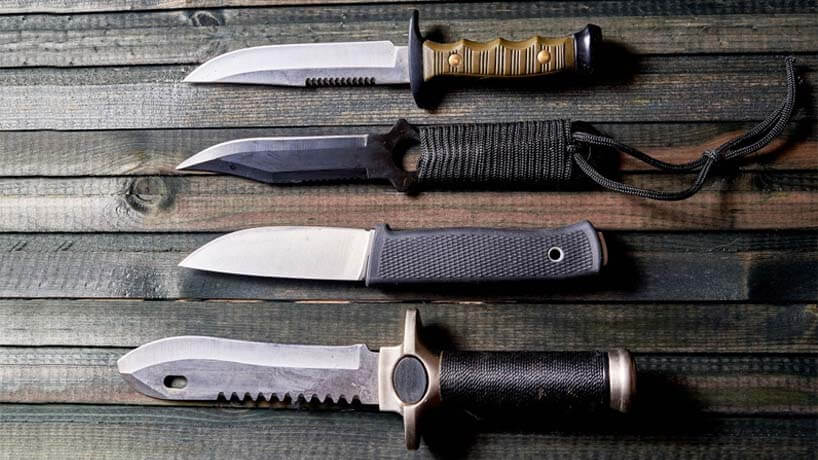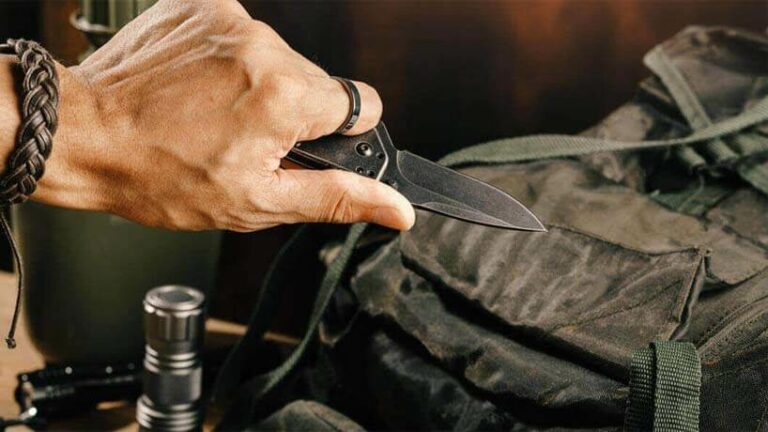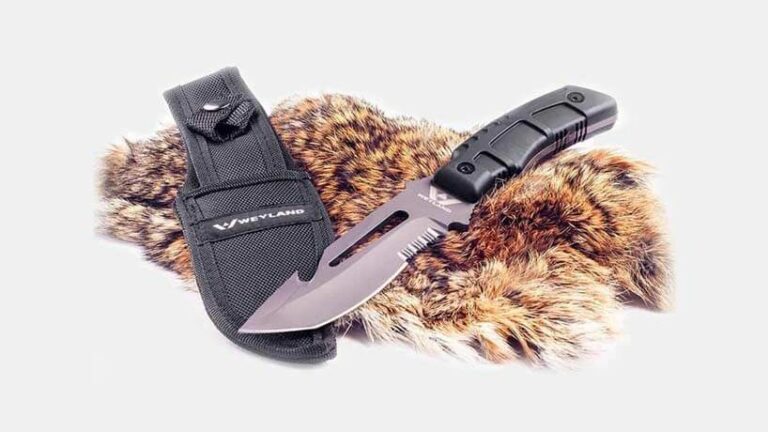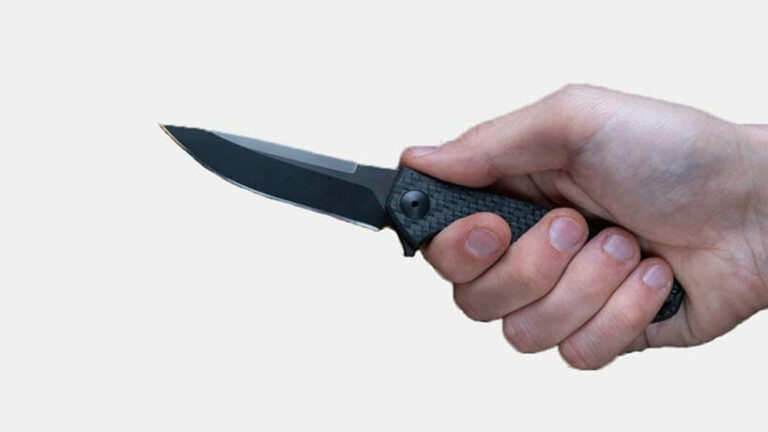Each knife on the market is designed with a specific purpose in mind. What are these design features that manufacturers consider? What makes a hunting knife a hunting knife? Every knife made is specifically adapted for the climate and nature of work that it is intended to carry out. A knife needs to be able to cope with the conditions it will be placed in.
If you’re hunting in the outdoors, where temperatures can range from scorching to freezing and from dry to soaking wet, you need to be able to trust that the knife you have will be able to withstand the climate. It is also essential to know about hunting knife characteristics because it might enhance the skillset that you have with it.
Knowing what type of tip the blade has might make you skin an animal differently. Similarly, depending on what kind of handle you have, the care you take when putting the knife on the ground might change. These are essential to the overall performance of the knife. Let’s take a deeper look at the characteristics of a hunting knife.
Fundamental Hunting Knife Characteristics
Blade Characteristics
1. The Point
The point is the most crucial part of the blade on a hunting knife. Several types of blade points include clip point, drop point, tanto, and gut hook. They can all be handy and fine for a hunting knife, but the most popular is the gut hook type. It can be hooked over the skin and pulled down to sever the skin. It is very efficient and is used most commonly with hunters who skin their animals.
2. The Spine
The spine is the back of the knife. It offers support to the point and the blade edge. It is common to find hunting knives with thick spines because hunters like strong and sturdy blades. Anything that threatens to break at the first sign of a heavy-duty task is a no-go for many professional hunters.
A hunter could get stuck out in the wilderness and would have to survive for a night out, and in so doing, he might need a worthy companion to defend himself and carry out such basic survival tasks. A durable knife is a go-to in that case.
3. Grind Angle
If you’re looking for a very sharp knife, you’re going to want to look at the grind angle or the knife blade’s bevel. Hunting knives should be very sharp to be able to cut and slice through animal skin. The angle of a sharp knife is usually somewhere between 12 and 15 degrees. The edge retention of a blade usually doesn’t have anything to do with the bevel angle.
4. Steel Type
A hunting knife needs to be solid and effective; a dull blade edge cannot be either. If the knife is made from high-quality steel, it will retain its sharpness pretty well and be quite durable. If it is inferior steel, it will begin to rust in moist conditions and dent and chip easily. So go for a high carbon German steel if possible.
Handle Characteristics
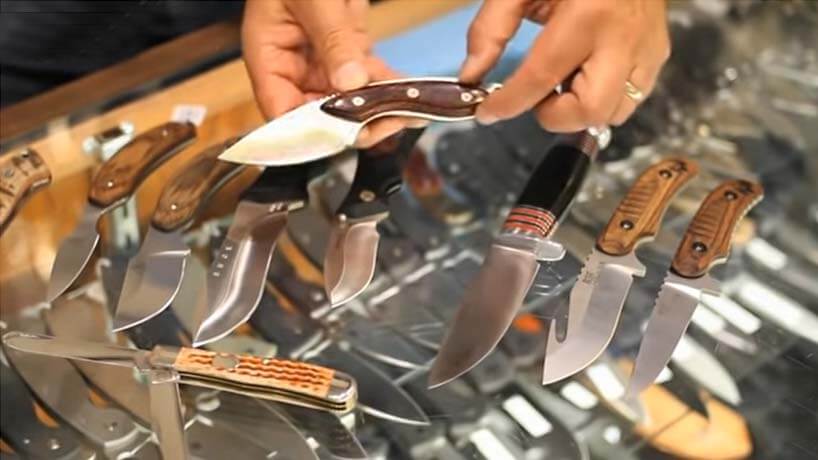
Bolster
This one is rather essential among all the hunting knife characteristics. A bolster is the part of the handle that sticks out a little to stop your hand from slipping off the handle and onto the blade. It has been known to become uncomfortable after vigorous use. Still, it is primarily a safety feature that is essential for hunting knives.
Without it, the forceful use of the knife is problematic. The bolster also provides significant amounts of leverage for slicing skin when skinning an animal. The bolster should be made of stainless steel. Otherwise, it might rust. A bolster can also be constructed from strong polysynthetic materials or wood.
Finger Grooves
This is an essential aspect of grip strength. It is the part of the handle that slopes in towards the center of the handle and is designed so that extra grip strength can be attained with a tight finger grip. The finger grooves should fit your hand size properly. Otherwise, it can be slightly uncomfortable to use over long periods.
If the finger grooves are not large or very pronounced on a hunting knife, this is ok. Usually, hunting knives have exquisite handle grip patterns, which eliminates the need for finger grooves. Still, it might come in handy anyway, especially if you need to use the knife vigorously.
Tang
The tang refers to the portion of the blade that extends continuously from the blade into the handle. A full tang extends the entire length of the handle, and a partial tang extends only part of the way up the handle. A full tang offers the most stability and is very sturdy, giving the knife a lot of balance and durability. A hunting knife is typically made with a full tang for this reason. In short, it isn’t always necessary to have a full tang; a partial tang can perform well too.
End Cap
The end cap works in the opposite direction to a bolster. It has a similar function but in the reverse direction. It prevents the hand from slipping down the handle when cutting going backward.
The end cap is sometimes made of a different material from the rest of the handle, but the end cap that offers the most strength is designed to extend off of the same material as in the handle. An end cap is not an essential piece of the handle, and a hunter can live without it, but it can be conducive when skinning an animal because most of the action when skinning an animal is a backward action.
What to Make of All This?
It can be a little overwhelming to read all of this information about hunting knife characteristics for the first time and decide on a knife. These are a few critical characteristics of hunting knives that are key components to the knife and its performance. There are other aspects to consider as well, such as the hardness of the steel and the handle material.
But these are not necessarily characteristics of a hunting knife and so haven’t been included here. The factors mentioned above will determine how the knife operates as opposed to how high quality the knife is. So when considering a good hunting knife, please take into consideration its quality as well as its characteristics.
Hunting Knife Characteristics: The Wrap Up
The choice is essentially yours to make and if you’re still unsure about what to make of all this information, then look at a buying guide that goes into more detail about each component of a hunting knife. Otherwise, if you’re familiar with hunting knives and just needed a refresher course to remind you of the critical features of hunting blades, then hopefully, you have regained some knowledge.
Hunting knife characteristics are essential to know because they cover a range of other types of knives such as survival, tactical, sporting, and camping knives. They all have different functions, but I would say that if you have yourself a good hunting knife, then you’ll be able to cross over into any of the other spheres of outdoor activities without any problems at all.

